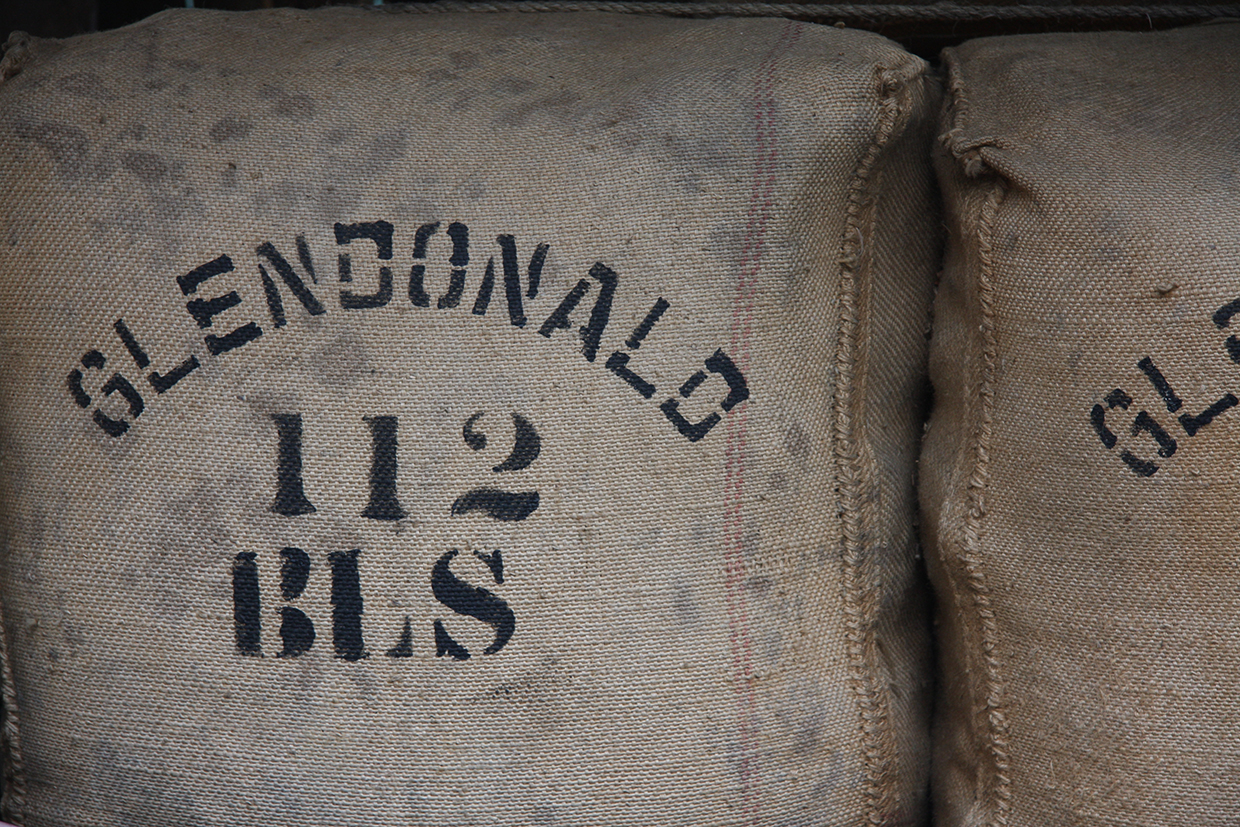Secret Lives of Stencils is an exhibition that celebrates the life and 150-year history of the New Zealand wool bale stencil – and aims to preserve the memory of an aspect of our pastoral heritage that is rapidly disappearing.
“Many Kiwis will be familiar with stencil letters used by sheep farmers to mark their wool bales when they sent their wool by ship to British sales,” says Dr Annette O’Sullivan of Massey University School of Design who undertook the research, design and photography for the exhibition.
“Marks that were stencilled on wool bales represented the personal identity of the original owners, and were used in branding sheep stations. More recently they have come to represent rural New Zealand identity. Secret Lives of Stencils tells the story of New Zealand branding and identity through the history of wool bale stencils in a series of interpretation panels and photographs of objects from iconic New Zealand sheep stations.”
Wool bale stencils were usually made of tin, zinc, copper or aluminium. To make a mark, the stencil plate was held against the bale or sack containing wool, with paint or ink then brushed across the plate through the open letter spaces onto the material below – a simple and easy way of printing information on the coarse hemp or flax material of a bale.
“Recognition of the importance of the brand to the station inspired many owners to use it for their station identity. Station stencils were applied to post boxes, gates and the sides of trucks, while brand marks were used on stationery, personal items and tools,” says Annette.
“Today, many stations owned by generations of the same family acknowledge the significance of their stencil brand in the design of their websites, for example, bringing a depth of story and authenticity to their identity.”
Secret Lives of Stencils is a joint collaboration between Heritage New Zealand Pouhere Taonga and Massey University College of Creative Arts Toi Rauwhārangi. The exhibition will continue touring the length and breadth of the country once it has finished its season at Highwic on August 22.
The historic Newmarket home – one of the country’s finest Carpenter Gothic mansions – is cared for by Heritage New Zealand Pouhere Taonga, and is the perfect venue for the exhibition according to Auckland Property Lead Amy Gaimster.
“Highwic was home to the family of Alfred Buckland, and the epicentre of Buckland’s burgeoning agricultural empire,” says Amy.
“Alfred Buckland became one of the largest agriculturists in Auckland Province. In 1858, he conducted New Zealand’s first public wool sale from a store on Queen’s Wharf at which 250 bales of wool were sold for prices ranging from 9½d to 15½d. From this modest beginning wool sales became an important part of the activities of Alfred Buckland & Sons Ltd.”
A major landowner with farms at Buckland’s Beach, Awhitu and the Kaipara, Buckland’s largest landholding was at South Kaipara Heads where he had a wharf built specifically to load his sheep.
“Buckland’s Run was held up as a model to aspiring farmers, and by 1880 he had over 3000 sheep,” she says.
“Alfred Buckland was a key figure at the cutting edge of the growth of agriculture in New Zealand. We’re delighted to be hosting an exhibition that celebrates this important aspect of our farming heritage.”
Secret Lives of Stencils is on until 22 August, open 10.30am—4.30pm.
Highwic
40 Gillies Avenue, Epsom
highwic@heritage.org.nz
09 524 5729






